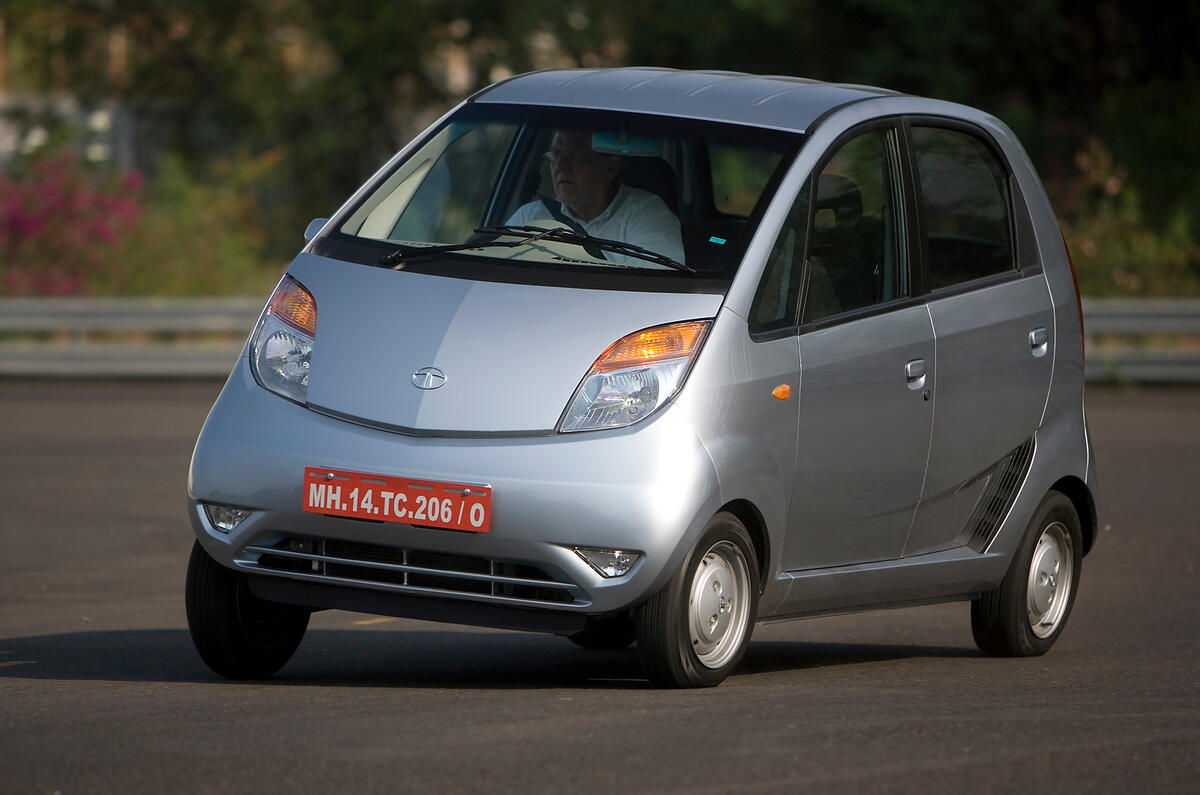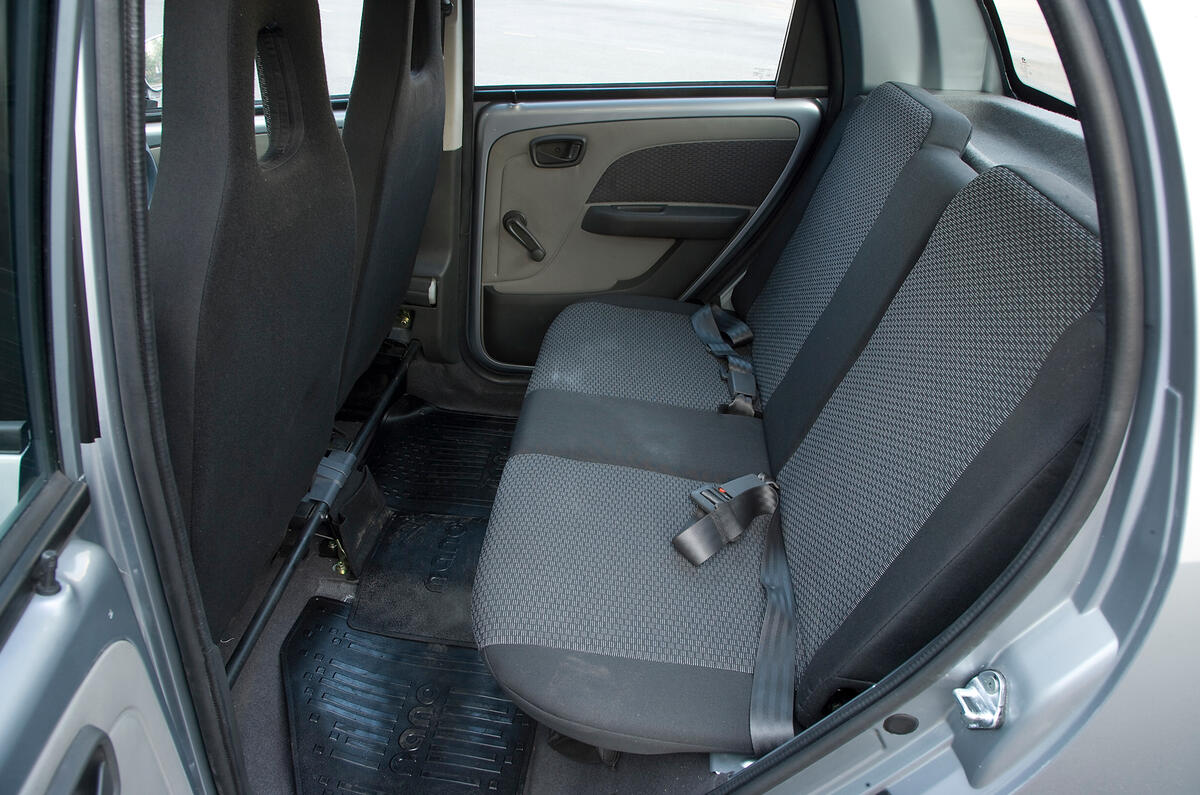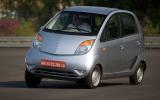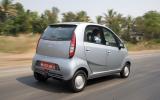Being the cheapest doesn't necessarily make it the worst and for £1700 the Tata Nano is unbelievable value. It's a one-box saloon, as short and narrow as an original Mini, but more than a foot taller, with its steel monocoque body mated to a tough spaceframe.
The Nano has been conceived to create a nation of drivers. In India, the transport of choice for the masses is the motorcycle, but Tata Motors think that 450,000 Nanos can be sold every year for around double the cost of a 100 or 150cc bike. The Nano makes it possible for four to travel together and in greater safety.
Creative cost-saving is evident throughout the Nano. Flat side glass, a single wiper and no tailgate, three wheelnuts instead of four and a single door lock all help to keep the price low. But although the entry-level model is spartan, the CX and LX models have air-con. Incredibly for such a cheap car, a huge range of accessories and customisation options are offered, from decal sets to bodykits and dashboard trims.
The 625cc, twin-cylinder engine develops 35bhp, but with only 600kg to carry, a 50-55mph cruise is achievable. The low weight means all-round drum brakes are all that's required. Despite the cheaper technology, the Nano has independent suspension front and rear, but is designed without anti-roll bars.
On the road, the Nano is a surprisingly decent proposition. The engine starts with a pleasant thrum, the four-speed gearbox is light and easy to use. Power is meagre, but it'll shift four big adults well enough to stay with busy traffic in town and country.





























